Some snaps.
You can read my review of the Panasonic GX7 here.
Part II of this lens review is here.
AF speed:
By way of preface, I can state categorically that the AF focus speed of the Olympus lens on my GX7 body is as close to instantaneous as is possible regardless of the lighting. Whereas I had a 30% rejection rate with the 20mm Panasonic because the lens did not focus in time, the rejection rate with the Olympus, based on the 193 images I snapped the other day, none at an aperture smaller than f/2.5, was zero. Such rejects as there were resulted from poor composition, weak subject matter and so on.
For the street snapper little more need be said.
Flare:
Before getting into the serious street stuff, let’s dispel any issues concerning flare, the other debilitating ‘feature’ found in the Panasonic optic. This unexciting image was shot with the sun in the frame, shining directly into the lens:
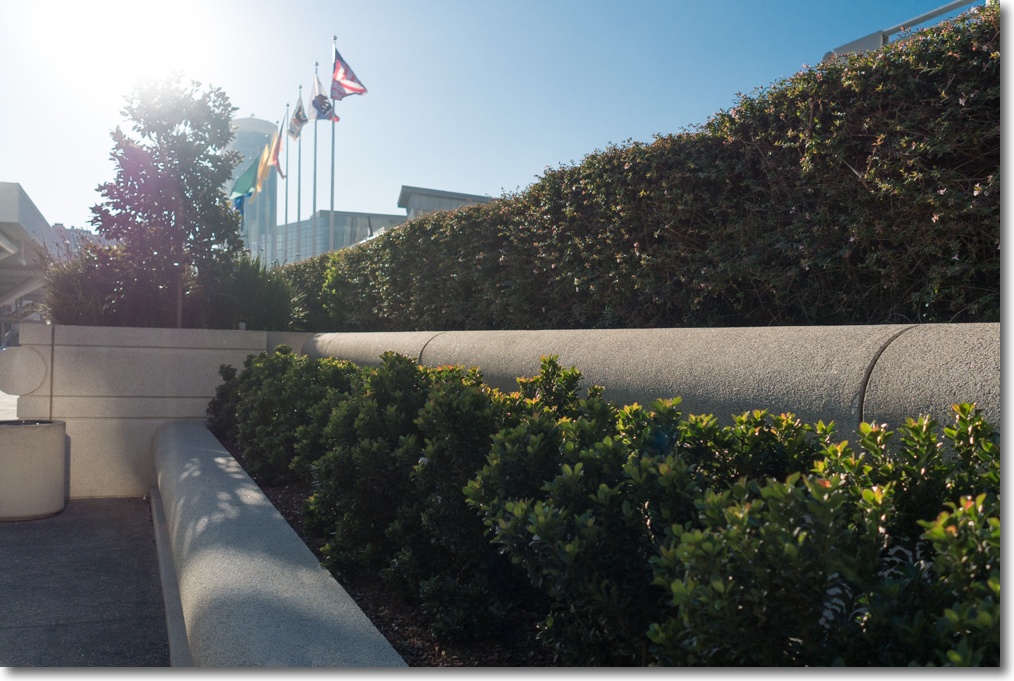
Minimal flare.
No modern lens I own, not even the 35mm f/1.4 Sigma for the Nikon, can hold a candle to this performance. One other note. The Olympus 17mm f/1.8 lens delivers exceptionally high contrast images (which goes hand in hand with its outstanding flare resistance), so much so that I found that I often had to turn down contrast (Down with the Highlights slider, Up with the Shadows one) when processing the RAW images in Lightroom 5.
Sharpness:
Resolution? The only thing to report here is that 18″ x 24″ prints, a medium far more demanding than any electronic display, are par for the course at any aperture you care to use. Stopping the lens down need only be done when more depth of field is required.
Is the lens as sharp as Sigma’s monster 35mm f/1.4 on my (even more gigantic) Nikon D3x? No. I doubt anything is, if you have the patience to actually find an example of the Sigma whose AF is properly adjusted – it took me three before I got there. Then again, the Sigma with no camera body weighs more than the GX7/17mm combination and the Olympus focuses noticeably faster.
Is the Oly sharper than the Panny 20mm? Who knows, given the Panny’s inability to lock in sharp focus in a reasonable time?
Pictures:
Here are some snaps from my outing, all taken in San Francisco on the Saturday after Thanksgiving, the city alive with shoppers and tourists. All were taken between f/1.8 and f/2.8, using RAW originals processed in Lightroom 5, with ISO from 400 (Kodak TriX lives!) to 3200. Mostly these are straight out of the camera, with no post processing other than RAW conversion to JPG and automatic application of my lens correction profile :
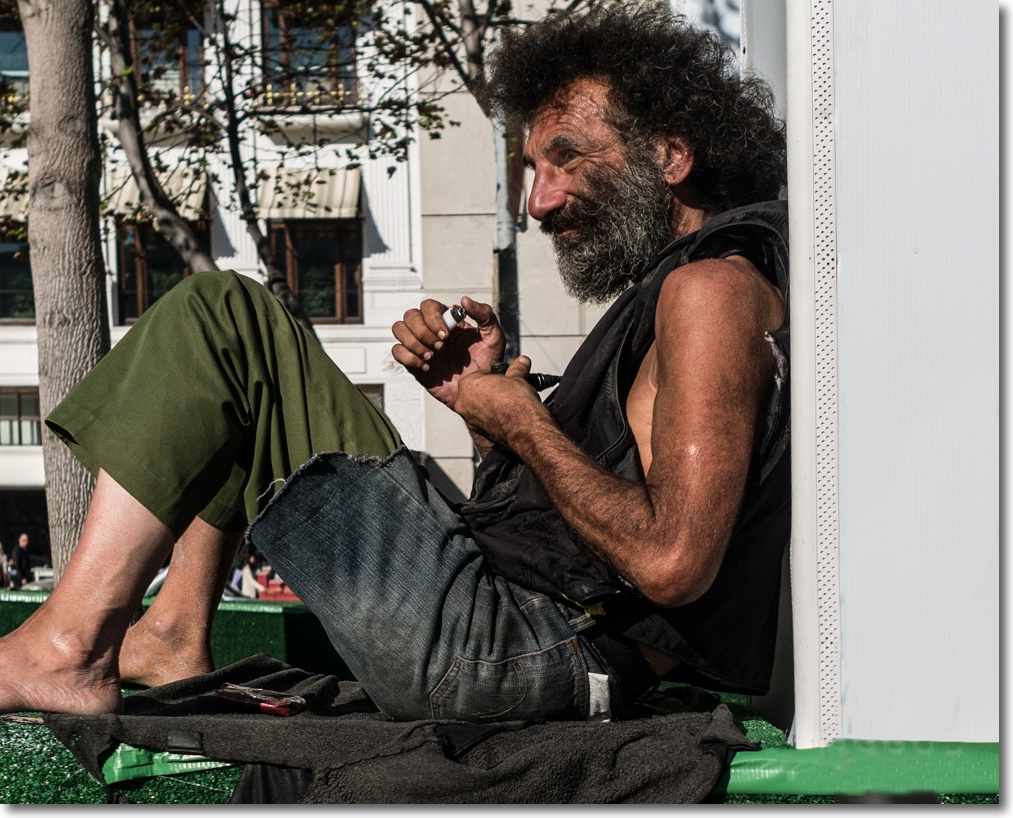
Lighting up. Nothing beats a 35mm (FFE) lens on the streets.

Selfie. The GX7/17mm Oly combination is almost impossibly responsive.
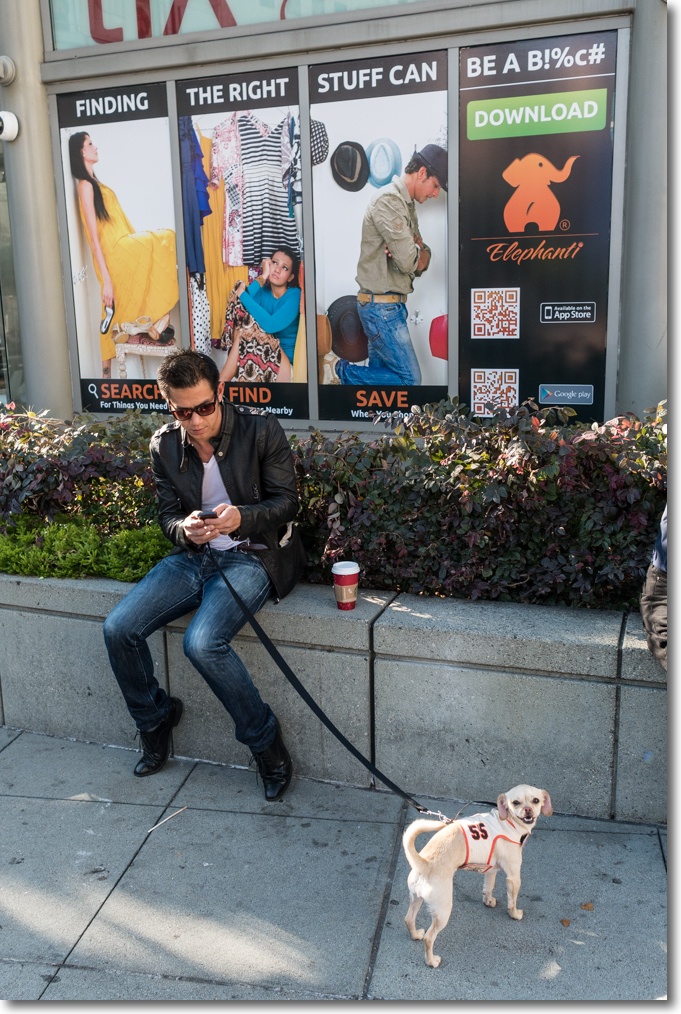
$5 pup. I snapped five in five seconds here – a buck a snap – and the fourth
caught the dog just so. The truly silent electronic shutter in the GX7 is a boon.

These charmers were getting a lot of attention.
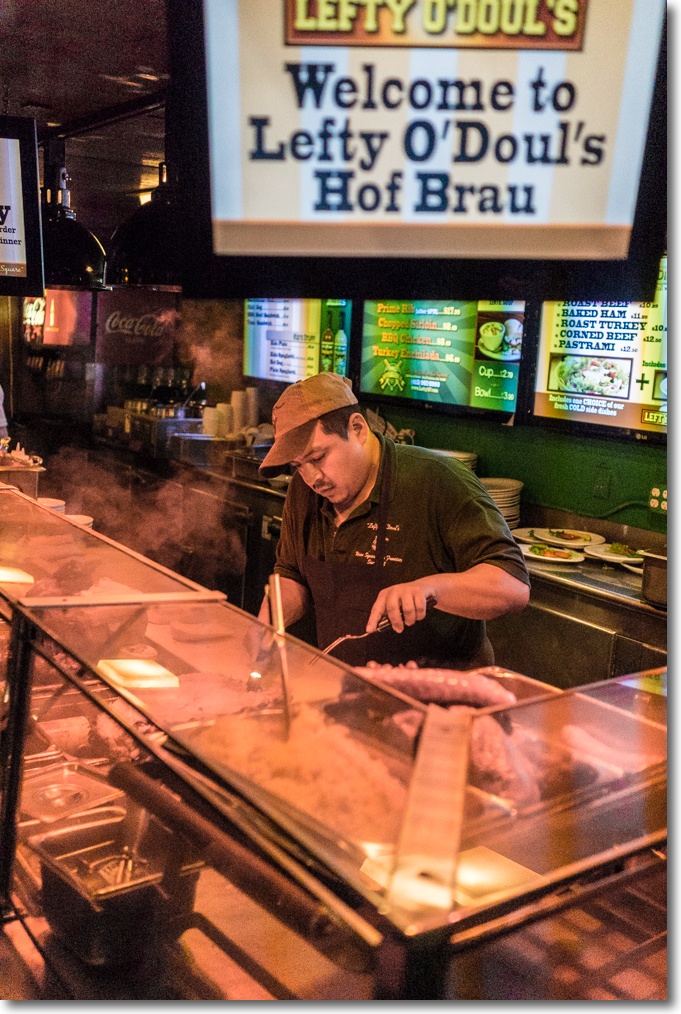
Carving my pastrami at Lefty O’Doul’s.
The rye bread here is beyond fresh.
At f/1.8, ISO3200.
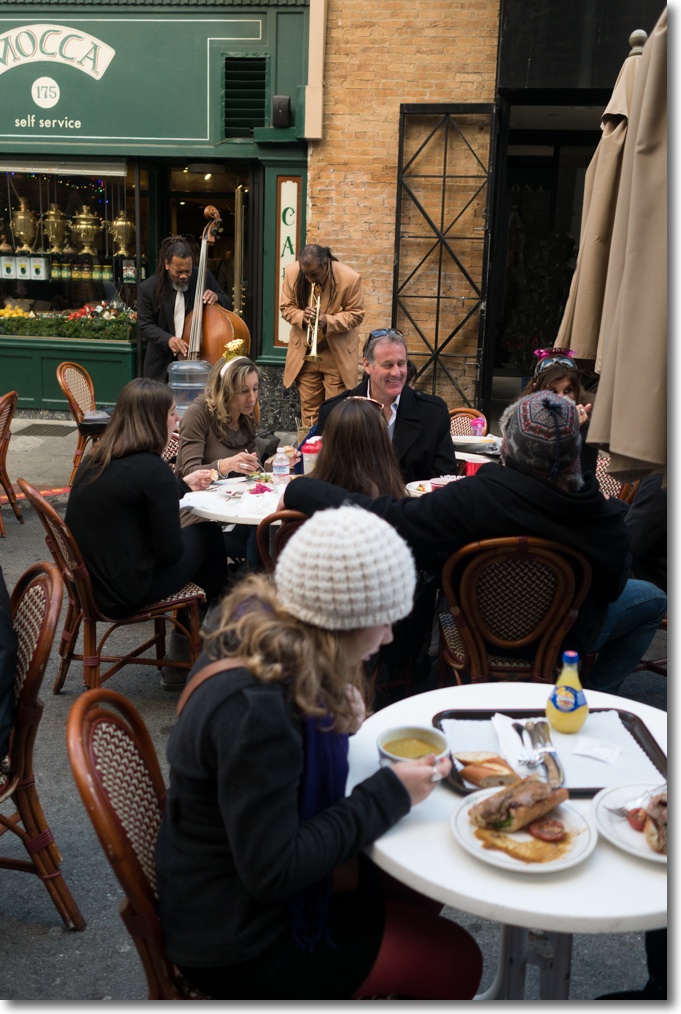
Dining al fresco on Maiden Lane. Quite lovely colors here.

Impossible not to make a donation when visited with warmth like this.
At f/2.5 and ISO400, this one made a gorgeous 18″ x 24″ print.
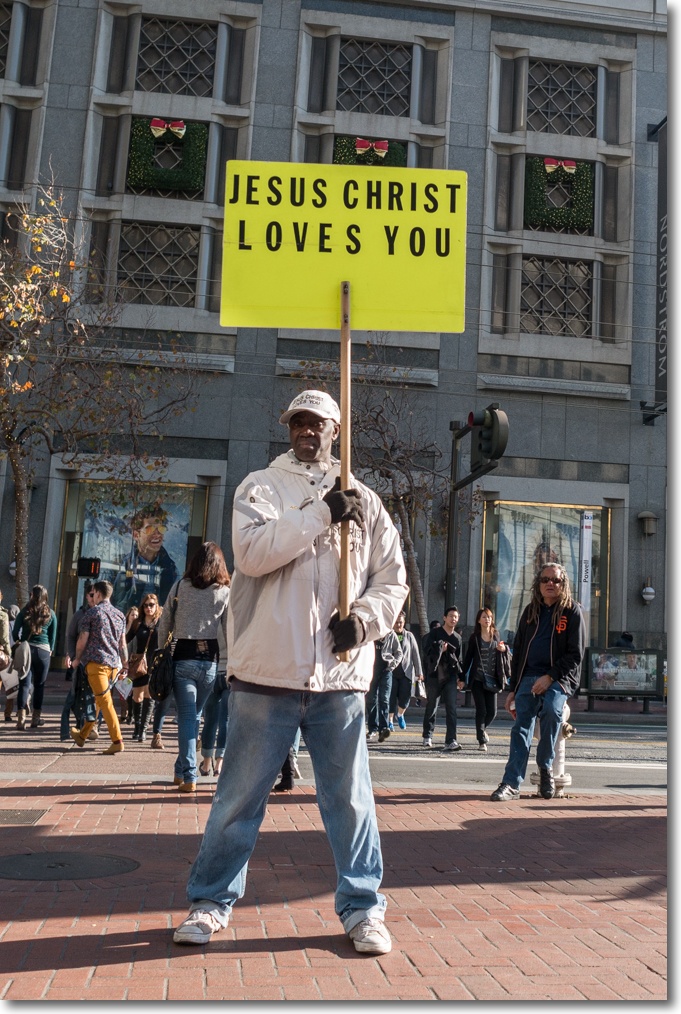
Uh huh.
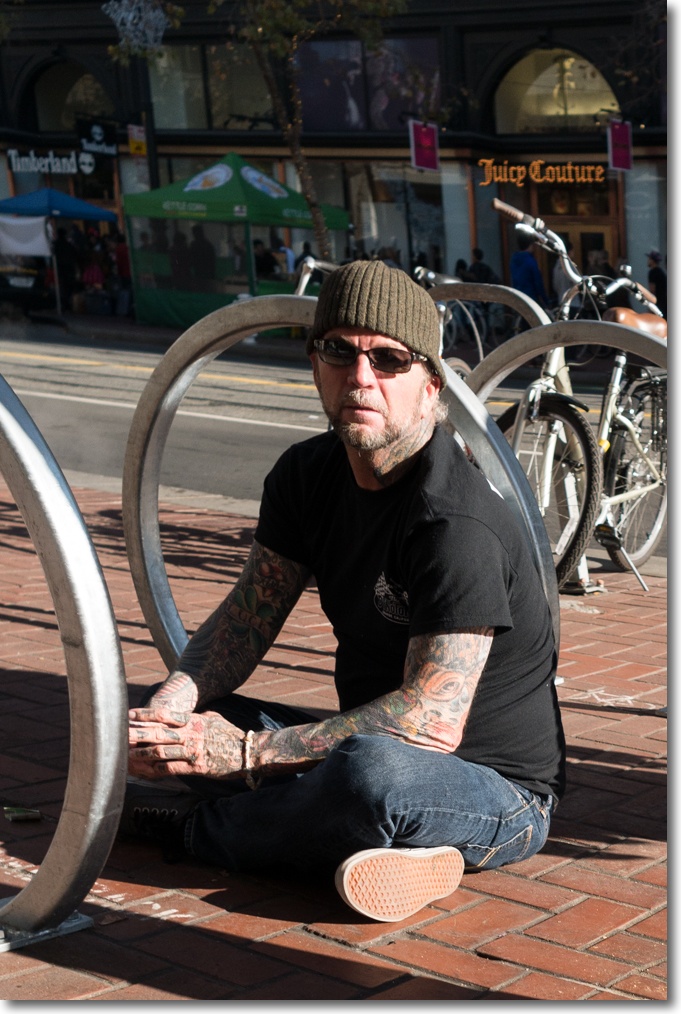
Tattoo dude.
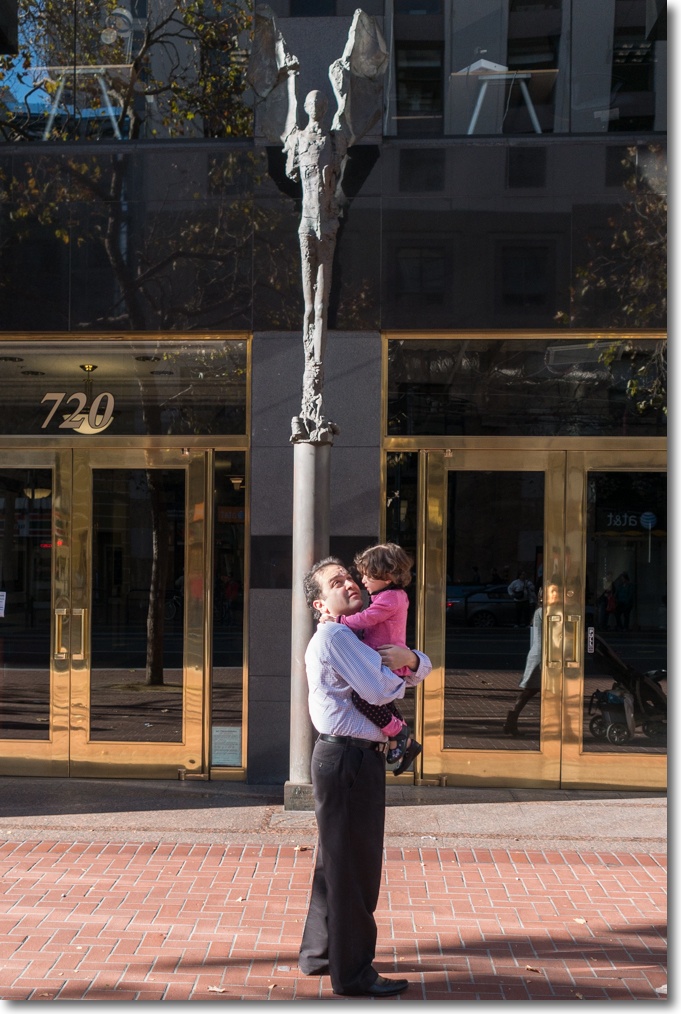
Looking up.
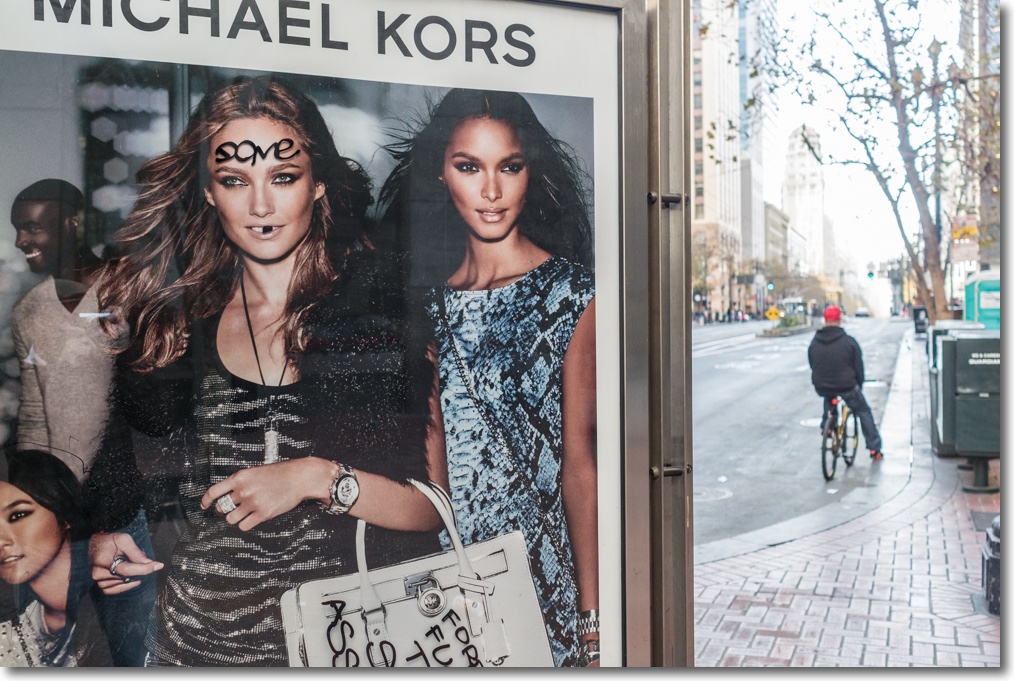
Toothless in San Francisco.
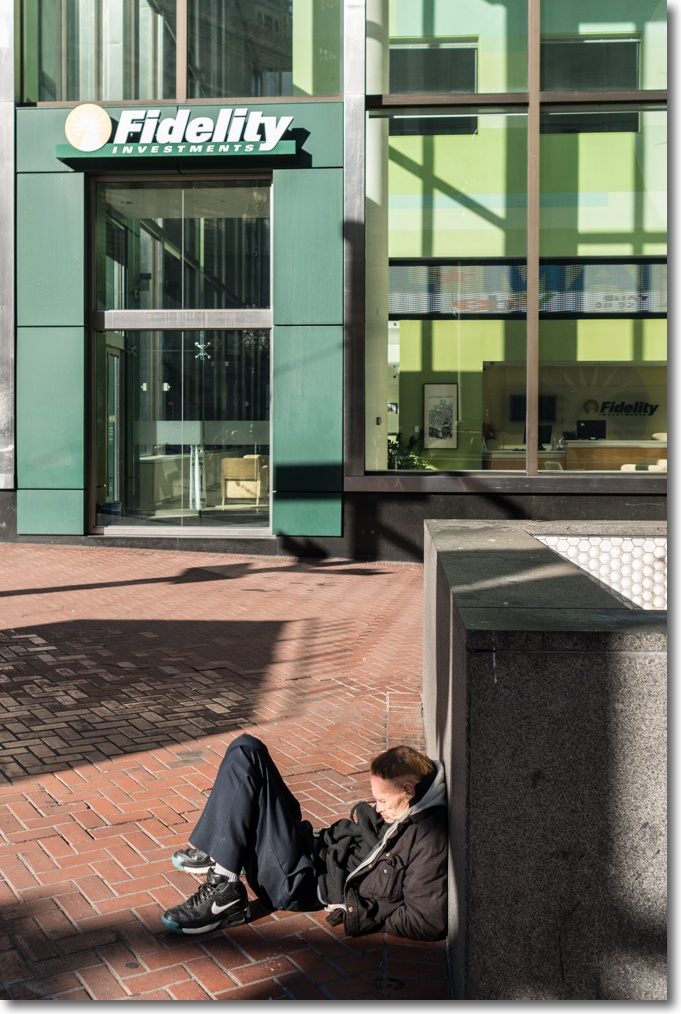
What happens when you listen to sell side stock tips.
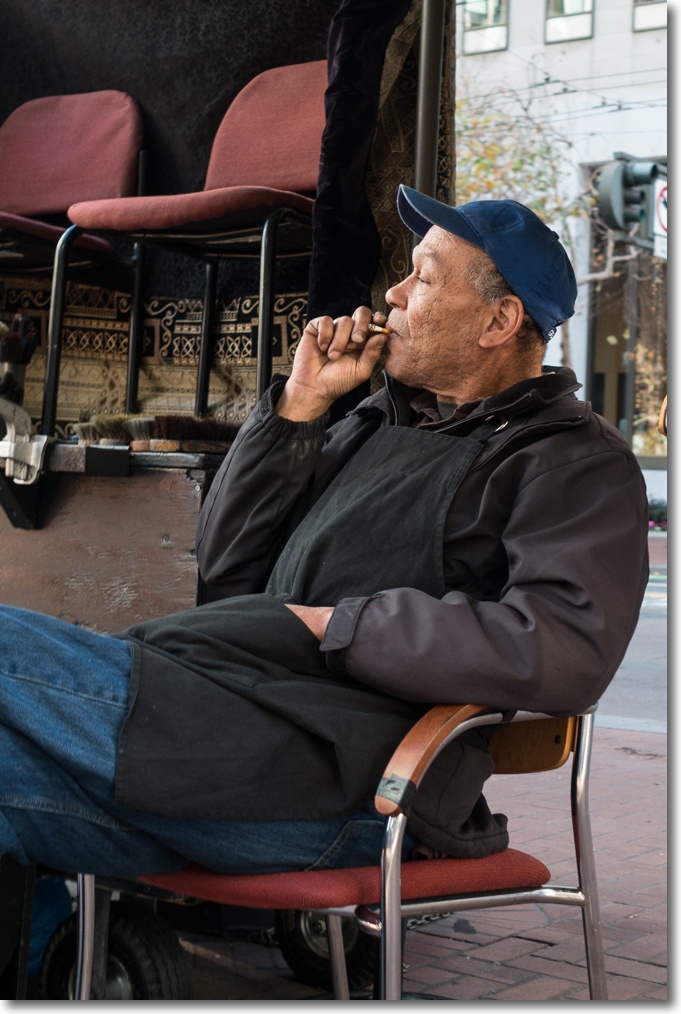
Shoeshine man. The electronic shutter is inaudible at any subject distance.
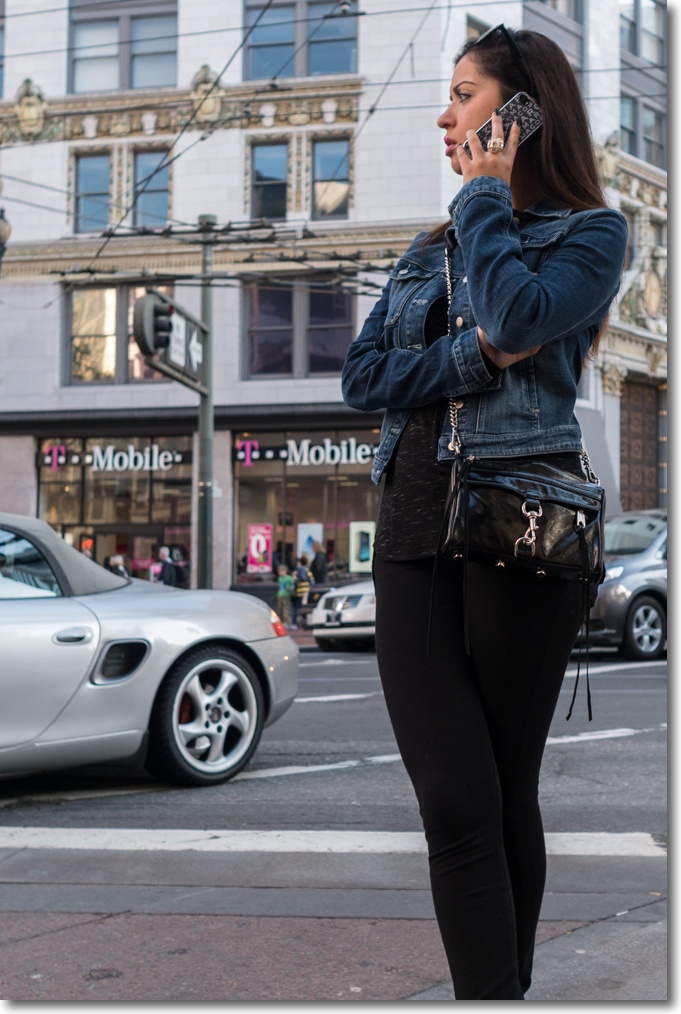
Porsche girl.
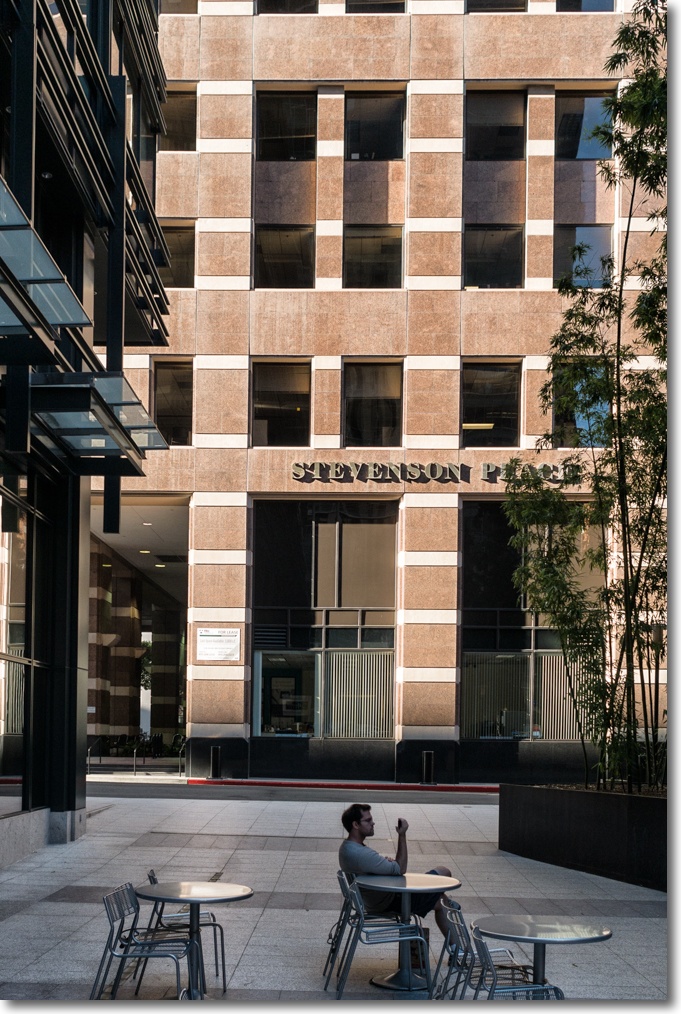
Alone.

The sales pitch here was “Jesus is a Negro”.
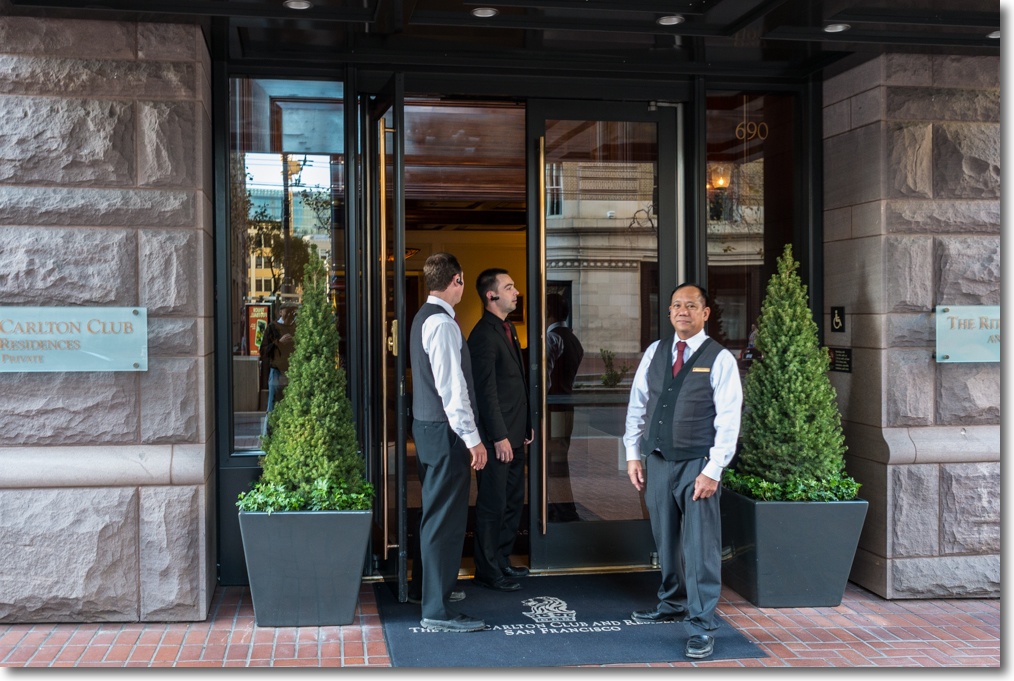
Ritz Carlton guards making out like the CIA.
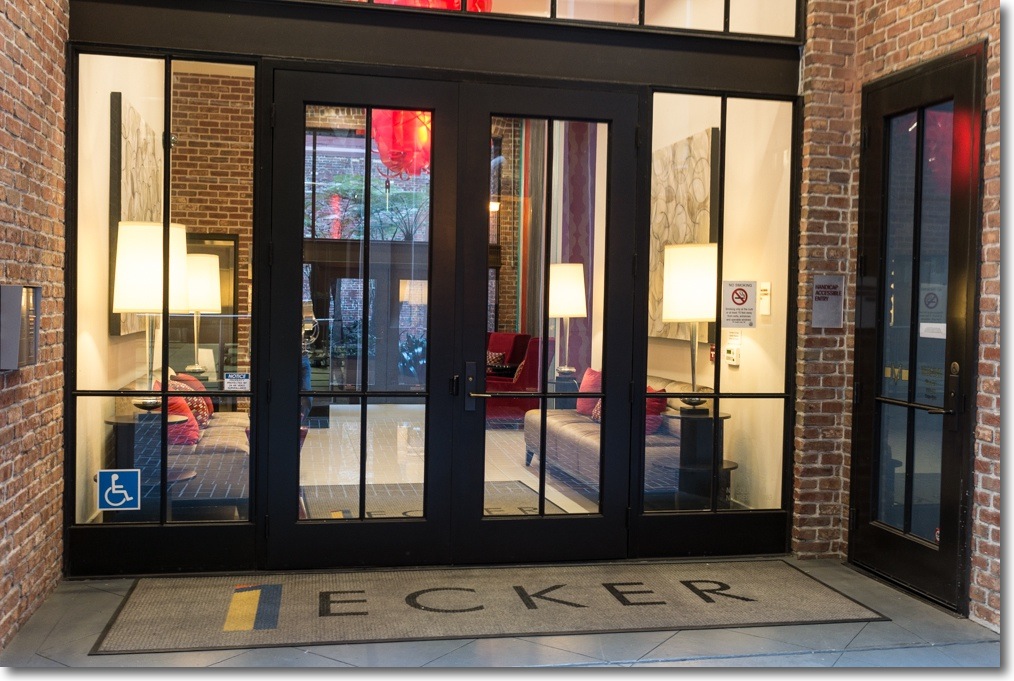
Beautiful color rendering. The GX7’s in-body OIS works well – this was at 1/20th.
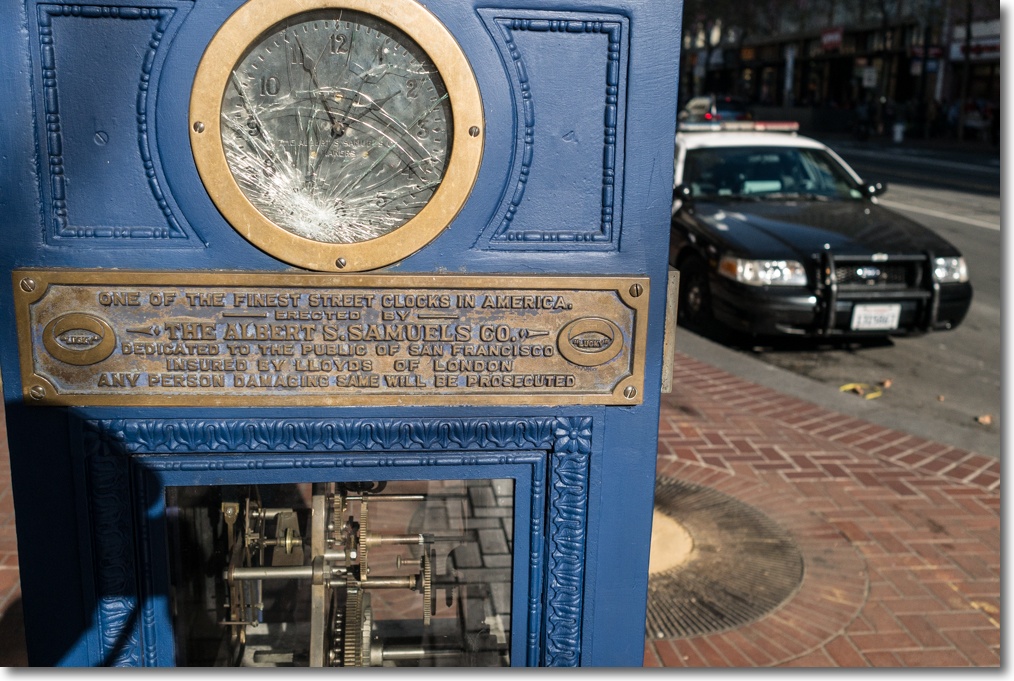
The shallow depth of field at large apertures comes in handy.
The Oly lens has excellent resolution.
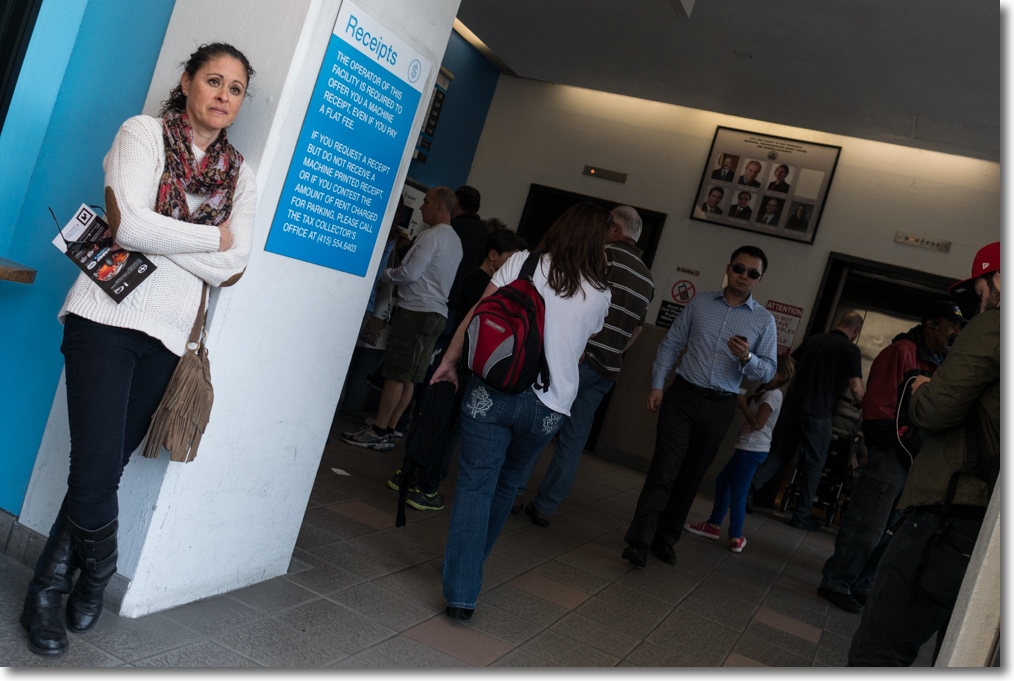
Some faces leave no time for composition. The last snap of this outing
and I was half dead from exhaustion, but could not pass this by.
Color rendering:
The color rendering is really pleasing in these images. Whether that’s due to the camera, the lens or both I have no idea, but the combination is right up there with Bogart and Bacall, Astaire and Rogers, and JP Morgan and systemic corruption.
Aperture priority operation:
I used the ‘A’ exposure mode for all of these snaps, with the electronic (silent) shutter, meaning that the only thing I ever had to fiddle with was the control wheel to change apertures. Panny really needs to update its firmware to allow one stop intervals between clicks, here. Only gear fetishists need the default 1/3rd stop steps, which only serve to slow operation down.
Electronic shutter math:
One caution – as I always use the silent electronic shutter in the GX7 – doing so with fluorescent lighting as the sole light source is not a great idea. You will get stripes as the tubes flash on and off during the exposure, as here:
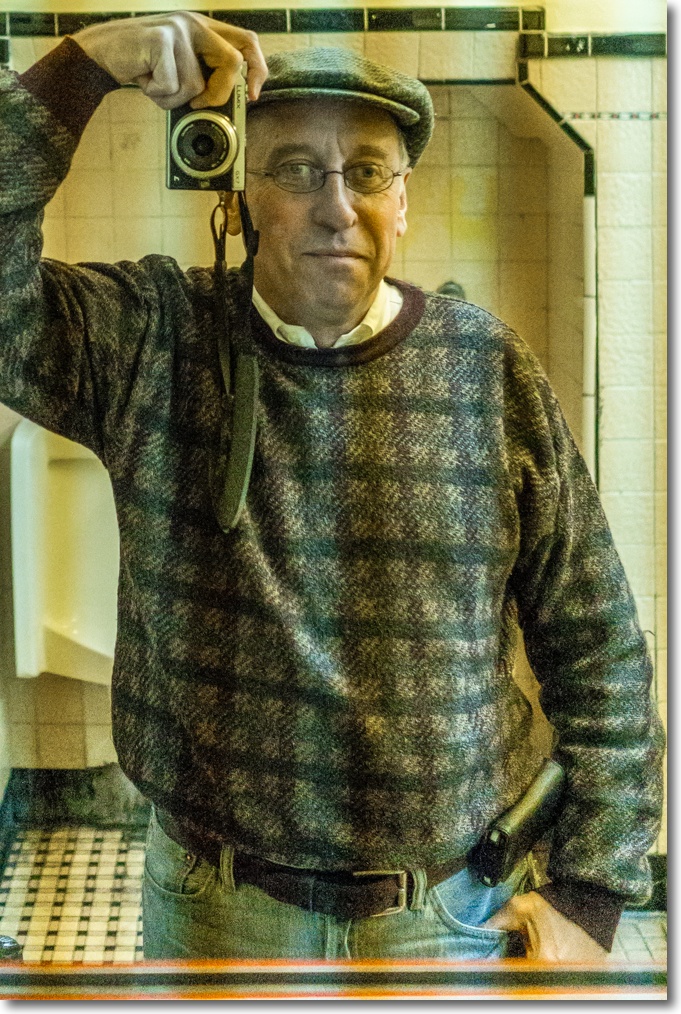
In the little boys’ room. f/1.8, ISO 3200. Spare GX7 battery
is in the coin pocket in my jeans. The excellent
slip proof Upstrap is on the camera.
Be sure to read the Comment below regarding the use of non-OEM batteries.
Assuming a 60Hz flash frequency (US mains) the five cycles seen here suggest that the electronic shutter takes 1/12th second (5/60) to traverse/scan the field of pixels, which is why you get noticeable distortion of moving images taken using this shutter. You can bet that the scan speed will increase in subsequent iterations of this design, making for less movement distortion.
For my preferred subject matter, movement distorion is not an issue. If it’s an issue for you, use the faster traversing mechanical shutter in the GX7, which is some ten times faster in this instance. Why anyone would need the primary benefit of the electronic shutter – silence – with a moving subject is beyond me, so I fail to see this as an issue.
What I write is genre specific:
In these articles it is not my goal to comment on anything other than taking street snaps and making nice, big, sharp prints from them. If movies, landscapes, birds, bugs or sports are your thing this is the worst place to look for guidance. If you want to learn about the mind numbing selection of exposure modes, issues like framing rates, white balance and sensor aberrations or how well this gear compares with dozens of competitors, there are any number of fellows with white lab coats and zero imagination out there whose site content you should be reading instead.
Controls and ergonomics:
The knurled ring surrounding the shutter button is programmed to change apertures, being faster in use than the rear control dial. Other than the shutter release, it’s the only control used in the field, along with the C1/C2/C3 top right dial settings which are programmed to ISO 400, 1200 and 3200, respectively. ISO 3200 is the maximum the electronic shutter works with, which is just fine at f/1.8 in poor light.
Panny has some silly statements in its instruction manual as to the largest prints which can be made at different ISOs – silly on the conservative side, that is. Anything up to ISO 3200 will, given a modicum of technical skill, yield prints of any size your heart desires. Panasonic has made steady progress from the sensor found in its groundbreaking G1 and is to be highly commended for its efforts.
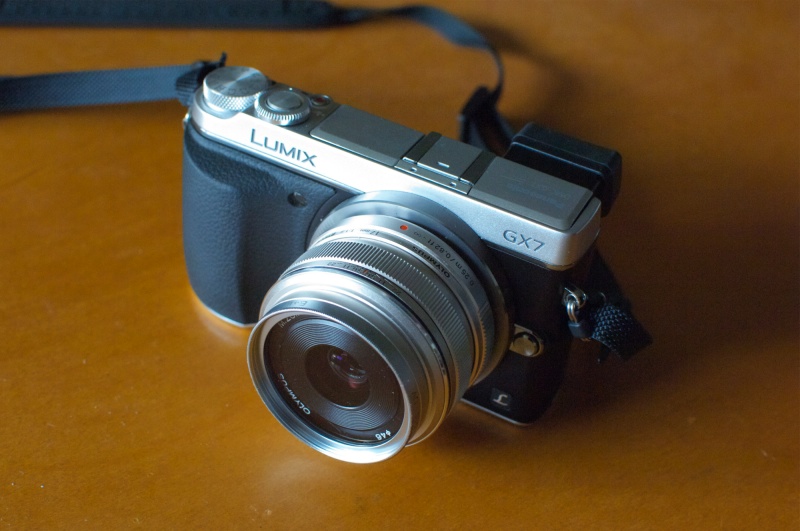
Street snapper’s dream machine. Amateur looks, state-of-the-art responsiveness.
The nice chromed protective lens filter is a 46mm UV from B+W and is a recommended accessory given the relatively exposed front element which, like the rear element, is plane on the outside, being neither convex or concave.
Finally, note that I dispensed with the duct tape on the top plate holding the EVF in place, replacing it with some double-sided sticky tape below the eyepiece, where it’s invisible.
Conclusion:
For years I have dreamed of a small, fast, automated digital camera and fast prime wide angle lens to do what the Leica M did so well for me on the streets for over three decades. Small with instant response, silent, unobtrusive, sharp. And with autofocus, please! Let’s not forget in-body OIS. Don’t-care-if-it’s-stolen cheap would be nice, too.
In the Panasonic GX7 mated with the Olympus 17mm f/1.8 MFT lens, I rather fancy that my dreams have been granted, and for less money than a couple of hours on the local shrink’s couch for far greater benefit. The sheer ‘transparency’ of this combination, placing fewer obstacles between the eye, the brain and the recorded image than ever before, redefines the street snapping standard for this devotee of the genre.
Recommended without reservations for like minded photographers.
Be very judicious with the non-OEM spare battery. Once, I made the mistake of running it empty and it died a terrible death. Corrupted the entire SD card and I lost all my precious video clips/photos from that shoot.
Wonderful review, thank you! I too am liking the electronic/silent shutter mode on my G5, however have had to be careful to avoid the indoor lighting issues and the more frequently encountered than expected (albeit subtle) “rolling shutter” issues. In that regard, was “tattoo dude” shot while panning?
Hmmm. I really don’t know. This sort of thing is a ‘stream of consciousness’ blur for me, a sort of informed autopilot mindset! – Ed.